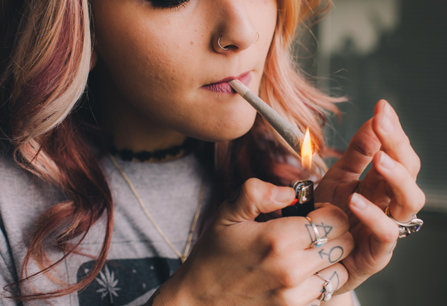New American Survey Shows Fewer Women Using Drugs, But Men’s Use Increases

The new National Survey on Drug Use and Health has just been released, and a careful study of these results sheds light on how American habits of drug and alcohol use have been shifting. It’s not surprising to learn that a higher proportion of men use illicit drugs than women. Any trip to a drug rehab will make it obvious that there are fewer women in rehab than men. But it is surprising to see that while women’s use has recently gone down for most types of drugs, men’s use has been increasing.
About the National Survey on Drug Use and Health
This annual survey provides information not only on drug and alcohol use but also tobacco use, mental health issues and the number of people who need or obtain treatment for problems with drugs or alcohol. To execute this survey, more than 60,000 Americans over the age of 12 are queried.
The survey tabulation published in September 2018 provides the results of survey data collected in 2017. These 2017 results appear alongside 2016 results so a comparison can be made. Are we doing better? Or worse?
A Comparative Look at the Numbers
Let’s compare the 2016 survey results with those of 2017 for men and women. That will enable us to see which drugs were used more by each gender and which were used less.
Which drugs were used by more men and boys over 12 years of age?
Here’s the drugs for which use increased between 2016 and 2017. (Bold type indicates a particularly significant increase.)

- Marijuana use by men increased from 21,839,000 users to 23,451,000
- Cocaine increased from 3,238,000 to 3,964,000 users
- Heroin increased from 596,000 to 600,000
- LSD increased from 1,330,000 to 1,494,000
- Ecstasy increased from 1,479,000 to 1,494,000
- Inhalants increased from 988,000 to 1,068,000
- Methamphetamine increased from 782,000 to 1,048,000
- Tranquilizers increased from 2,870,000 to 3,001,000
- Prescription stimulants 2,985,000 3,466.000
Which drugs were less frequently used by males?
- PCP users decreased from 69,000 to 63,000 users
- Pain relievers decreased from 6,226,000 to 6,018,000
- Sedatives decreased from 691,000 to 629,000
Which drugs were used by more women and girls over 12 years of age?

- Marijuana increased from 15,731,000 users to 17,438,000
- Cocaine increased from 1,833,000 to 1,979,000 users
- LSD increased from 566,000 to 748,000
- PCP increased from 33,000 to 34,000
- Inhalants increased from 671,000 to 691,000
Which drugs were less frequently used by females?
- Heroin decreased from 352,000 to 286,000 users
- Ecstasy decreased from 1,006,000 to 993,000
- Methamphetamine decreased from 609,000 to 585,000
- Pain relievers decreased from 5,291,000 to 5,059,000
- Tranquilizers decreased from 3,190,000 to 2,943,000
- Stimulants decreased from 2,662,000 to 2,372,000
- Sedatives decreased from 840,000 to 722,000
It almost seems like women and girls have gotten the message about how dangerous these drugs are and decided to rein in their use somewhat. But for most types of drugs, more men are reaching for more types, especially marijuana and a variety of stimulants.
Survey Just Provides Straight Numbers
Unfortunately, this survey is not accompanied by an in-depth analysis of why these changes have occurred. But for some of these changes, it’s not hard to see some pretty likely causes. For example, it’s not hard to understand the increase in marijuana use by both genders. More states have legalized the medical and recreational use of this drug.
Fewer people of both genders are misusing pain relievers which makes sense because there is a growing effort among medical practitioners to reduce the number of pills in circulation.
More people may be trying to avoid heroin because of the how common it is to find deadly fentanyl in heroin samples, or the fact that a product may be sold as heroin but actually contain enough fentanyl to kill the user.
Cocaine use began an upswing a couple of years ago. Is this too a backlash against the dangers of overdosing on opioids? Or is it just individuals looking for something new and different and finding cocaine?
Overall, it seems like more women are trying harder to reduce their drug abuse than men. New efforts by the federal government, agencies and health care organizations are beginning to place more stress on preventing drug abuse, not just treating addiction or using law enforcement to take drugs off the streets. The more we can get through to both men and woman of all ages with a drug prevention message, the more we may see these numbers drop in future versions of this survey.


 ®
®